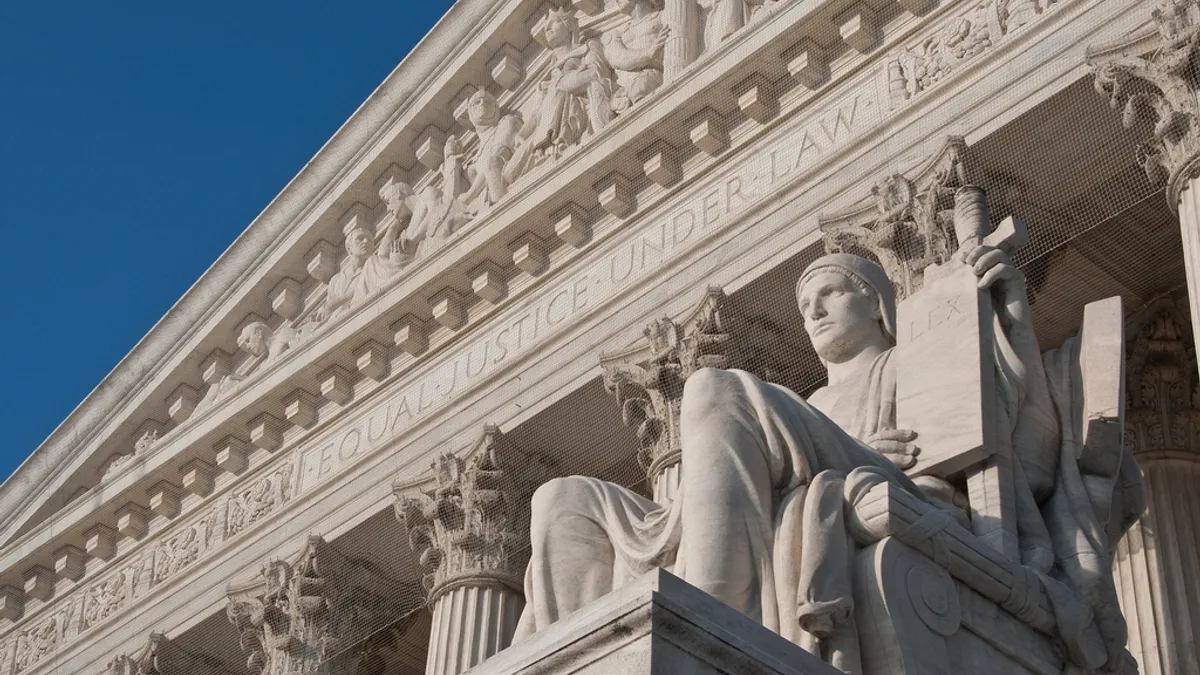WASHINGTON — As myriad employment-related bills languish in Congress and planned federal regulations fail to clear hurdles, courts continue to shift the employment landscape with case law.
And while many recent judicial changes focus on litigation tactics, some carry important lessons for HR professionals trying to keep their companies in compliance, Kenneth M. Willner, a partner with Paul Hastings LLP, told attendees last week at the National Employment Law Institute’s 42nd annual Employment Law Update in Washington, D.C.
Adverse employment actions
When an employee brings a discrimination claim, courts must consider whether he or she suffered an adverse action, Willner explained. But the definition isn’t completely clear. "We’ve seen courts interpret that differently," he said; "they’ve created different standards."
It’s a question that often comes up when an employee alleges that a transfer was an adverse action, he said. Courts are looking hard at whether the new job is less desirable, and there are differing opinions about how much weight to give factors other than pay (Outley v. Luke & Assocs., 840 F.3d 212 (5th Cir. 2016)). It comes up during paid leave, too, Willner said, noting that some have argued that it’s an adverse employment action to put someone on paid leave while you conduct an investigation.
To cope with the uncertainty, it’s important to ensure your policies and practices have built-in safeguards, he said; employers should be using objective criteria and standardized procedures. When it comes to paid leave during an investigation, for example, the key is having a policy in place ahead of time and applying it consistently.
Similarly, discipline decisions should be subject to review by higher management and HR, and decision making processes should be well documented, he said. Additionally, someone should be tasked with tracking these actions to ensure everyone is treated the same in the future, Willner suggested; be sure that comparable conduct from employees in similar circumstances is treated in comparable ways.
Pretext
Recent cases illustrate that honesty and transparency will go a long way in defending discrimination claims, Willner noted. Even well-intentioned actions can look like cover for discrimination, he said. For example, sometimes the employer thinks it’s doing someone a favor, perhaps giving a recently separated employee a good reference, even though they weren’t a good employee. If you put in writing that they were great and they end up suing you, that reference will torpedo your defense that they were terminated because they were a lousy employee, he said (Bagwe v. Sedgwick Claims Mgmt. Servs. Inc., 811 F.3d 866 (7th Cir.), cert denied, 137 S. Ct. 82 (2016)).
Likewise, it’s important to use objective criteria. Evaluate everyone who timely applied for a job, even if you think you already know who you’ll be hiring. And if you decide to turn down someone who scored better than your new hire in your process, think twice about it and make sure that the reasons are well documented and well supported. Take extra care to document decisions that involve subjective criteria, he said.
And HR should take particular note of an employee who received great evaluations but whose ratings fell off a cliff after receiving a new supervisor. The employee will claim bias, and it may well look like it, Willner told attendees; "step up your review of decisions in circumstances like these."
Similarly, when conducting an investigation, give the accused the opportunity to respond and take them seriously, Willner advised (Viana v. FedEx Corp. Servs. Inc., No. 16-56346 (9th Cir. March 22, 2018)). And when terminating an employee, tell them the real reason; don’t sugarcoat it, he said. You want to avoid giving a vague and inaccurate description of the decision. Instead, document the details and be specific in your termination memo, he advised; "the less you tell them, the more likely they are to sue you."
Race and national origin discrimination
We’re seeing more and more litigation on so-called reverse discrimination, Willner said. And as illustrated by Fisher v. Univ. of Tex. at Austin (136 S. Ct. 2198 (2016)) — a case approving a school's affirmative action program — education and employment decisions are going in different directions on this particular topic. In many employment contexts, "reverse discrimination" is discrimination. So how do employers prevent these claims? Give accurate reasons for your decisions from the beginning, and document your decision-making process, Willner said.
Separately, national origin discrimination litigation is increasingly addressing English-only policies. "I would say they should be narrowly tailored and not overly broad and not applied to jobs where not really necessary," Willner told the audience. Such policies, even in customer contact positions, have been challenged and have sometimes not survived, because some customers might not speak English or other employees might understand another language better, he said; "that’s an area to tread lightly in."
Religious discrimination
More than 50 years after religious discrimination was outlawed, employers and the courts are still wrestling with several issues in this area, Willner said. First, we’re still litigating what constitutes a religious belief. In Fallon v. Mercy Catholic Med. Ctr. (877 F.3d 487 (3rd Cir. 2017)), for example, the court held that while an employee had a sincere and closely held belief that vaccines do more harm that good, it was not a religious belief. So courts continue to struggle with separating a moral belief from a religious belief. Willner cautioned against placing too much weight on Fallon, however. "I think other courts might address it differently," he said; "this case may be a little bit of an outlier."
There also has been an uptick in litigation regarding employees whose beliefs prevent them from serving customers. This often arises with pharmacists and prescriptions for contraceptives, he noted. Employers are generally trying to accommodate both individuals by providing another employee who can help, but Willner said he expects we'll see more of this issue for some time.
Finally, employers should note that the undue burden standard for religious accommodation is different than that of the Americans with Disabilities Act, Willner said. A significant portion of religious accommodation requests deal with clothing and, as a general rule, employers should allow exceptions to clothing rules for religious apparel, unless there’s a business necessity and the policy is consistently enforced, he said. Business necessity can be a high bar here; it generally must be something like ensuring that firefighters can wear oxygen masks unobstructed, or that prison guards’ uniforms don’t pose a safety hazard. Outside of that, such rules are difficult to defend, he said.
Gender discrimination
Lastly, there are a number of trends right now in gender discrimination litigation, with the sex stereotyping theory applied to sexual orientation being the most notable. There’s been a clear trend of extending Title VII to sexual orientation and gender identity in the last few years, Willner said, although courts have taken different ways to get there.
For now, employment law attorneys have generally been advising that employers refrain from discriminating against individuals based on sexual orientation and gender identity, especially because the U.S. Equal Employment Opportunity Commission has been enforcing its position that such discrimination is prohibited. Employers could have some clarity soon, however, Willner noted; "There’s now a circuit split that will tee this up for the Supreme Court to get involved, likely sometime soon."
In addition, courts continue to entertain the idea that discrimination occurs when employers equate child care responsibilities with gender (Mayes v. WinCo Holdings Inc., 846 F.3d 1247 (9th Cir. 2017)). There also has been some movement with gender as a bona fide occupational qualification, Willner said; the instances in which employers can use this standard is "getting narrower and narrower and narrower every day."























